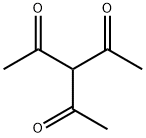AGRIMOPHOL
- CAS NO.:65792-05-4
- Empirical Formula: C26H34O8
- Molecular Weight: 474.54
- MDL number: MFCD01734500
- SAFETY DATA SHEET (SDS)
- Update Date: 2023-05-25 18:00:56

What is AGRIMOPHOL?
Description
This substance is the active ingredient of agrimony, the dry part above the ground of
Agrimonia pilosa Ledeb, which is distributed in most areas of China. Its same
generic plants include Agrimonia pilosa Ldb. var. nepalensis (D.Don) Nakai,
Agrimonia nipponica Koidz. var. occidentalis Skalicky, Agrimonia coreana Nakai,
and Agrimonia eupatoria Linn. subsp. asiatica (Juzep.) Skalicky. In recent years, the role of agrimony in the treatment of cancer diseases and other aspects of attention has gradually attracted much attention.
Agrimony also contains volatile oil, trace elements, agrimarin, agrimus lactone,
tannin, sterols, organic acids, phenolic compounds, flavonoids and glycosides, and
other compounds. Among them, the phenolic compounds mainly contain agrimony
A, agrimony B, agrimony C, agrimony D, agrimony E, agrimony, pseudoephedrine, and so on.
Physical properties
Appearance: light yellow-green oblique prism. Solubility: soluble in chloroform and benzene and slightly soluble in methanol, ethanol, and petroleum ether but almost insoluble in water. Melting point: 138.5–139.5?°C.
History
In folk medicine, the whole agrimony was used to stop bleeding and inflammation
sterilization; its rhizome was used to treat intestinal bloody flux, the radical bud to
expelling tenia. The clinical application and pharmacological studies have shown
that agrimony root has a broad spectrum of anthelmintic effect with high activity
and low toxicity.
In the early 1970s, the Chinese scientists used lime milk extraction method or
petroleum ether as a solvent to separate the extract from the grass buds and further
extracted the main ingredient, agrimophol . Animal experiments and clinical
applications show that the agrimophol has a broad spectrum of anthelmintic effect
with high efficacy, as well as the function of killing schistosomiasis.
The chemical structure of agrimophol was determined, and the synthesis was
realized . It is synthesized from methyl phloroglucinol.
Recent studies have shown that agrimophol has a significant anticancer effect .
Indications
Available in the Pharmacopoeia of the People’s Republic of China (1977). Capsules, suitable for the treatment of tapeworm and trichomonas infection.
Pharmacology
Agrimophol has excellent anthelmintic effect and also can be used for treating
trichomonas enteritis, vaginitis, and other diseases. Pharmacological and clinical
trials have shown that the effect of disinfecting cestode is stronger than that of
niclosamide and bithionol, and the side effects are fewer.
Agrimophol can be rapidly oxidized after irradiation and release of ROS such as
H2O2, O2 and OH?. OH? which directly destroy DNA and membrane structure of
tumor cells, leading to irreversible damage to the cells . Compared with the
monotherapy with radiotherapy, combined treatment with agrimophol further
induces 25.1% more cell death of human lung adenocarcinoma cells .
Clinical Use
Agrimophol is clinically used to expel tenia and roundworms and kill schistosomiasis.
Side Effects
Fewer adverse effects were observed; occasional nausea, vomiting, dizziness, cold sweat, or a diarrhea after a half month even can lead to collapse reaction. Although studies have shown that agrimophol has a more pronounced antitumor activity, there is no relevant antineoplastic drug available.
Properties of AGRIMOPHOL
| Boiling point: | 138.5-139.0 °C |
| Density | 1.265±0.06 g/cm3(Predicted) |
| pka | 4.50±1.00(Predicted) |
| CAS DataBase Reference | 65792-05-4 |
Safety information for AGRIMOPHOL
Computed Descriptors for AGRIMOPHOL
New Products
4,4-Difluoropiperidine hydrochloride tert-butyl 9-methoxy-3-azaspiro[5.5]undecane-3-carboxylate Indole Methyl Resin N-Isopropylurea N,N-Dicyclohexylcarbodiimide(DCC) MELDRUMS ACID 5-METHYLISOXAZOLE-4-CARBOXYLIC ACID Magnessium Bis glycinate Zinc ascorbate 1-bromo-2-butyne 2-acetamidophenol 9(10H)-anthracenone Erythrosin B, 4-Piperidinopiperidine 2-((4-morpholinophenylamino) (methylthio) methylene) malononitrile 2,4-dihydroxybenzaldehyde 3-(4-morpholinophenylamino)-5-amino-1H-pyrazole-4-carbonitrile Methyl 2-methylquinoline-6-carboxylate 2,6-dichloro-4-nitropyridine 4-Bromo-2-chlorobenzonitrile 2-(benzylamino)acetic acid hydrochloride 4-(tert-Butoxycarbonylamino)but- 2-ynoic acid 3,4-dihydro-2H-benzo[b][1,4]dioxepine 1-Phenyl-1-cycloprppanecarboxylicacidRelated products of tetrahydrofuran








You may like
-
 3-(4-amino-1-oxoisoindolin-2-yl)-1-methylpiperidine-2,6-dione 98%View Details
3-(4-amino-1-oxoisoindolin-2-yl)-1-methylpiperidine-2,6-dione 98%View Details -
 1-methylindoline-2,3-dione 98%View Details
1-methylindoline-2,3-dione 98%View Details
2058-74-4 -
 614-19-7 98%View Details
614-19-7 98%View Details
614-19-7 -
 3112-85-4 Methyl phenyl sulfone 98%View Details
3112-85-4 Methyl phenyl sulfone 98%View Details
3112-85-4 -
 20677-73-0 (2,2-diethoxyethyl)methylamine 98%View Details
20677-73-0 (2,2-diethoxyethyl)methylamine 98%View Details
20677-73-0 -
 3-(4-(hydroxyamino)-1-oxoisoindolin-2-yl)piperidine-2,6-dione 98%View Details
3-(4-(hydroxyamino)-1-oxoisoindolin-2-yl)piperidine-2,6-dione 98%View Details -
 57381-49-4 2-bromo-4-chlorobenzonitrile 98%View Details
57381-49-4 2-bromo-4-chlorobenzonitrile 98%View Details
57381-49-4 -
 4,6-dichloropyrimidine-5-carbaldehyde 98%View Details
4,6-dichloropyrimidine-5-carbaldehyde 98%View Details
5305-40-8
